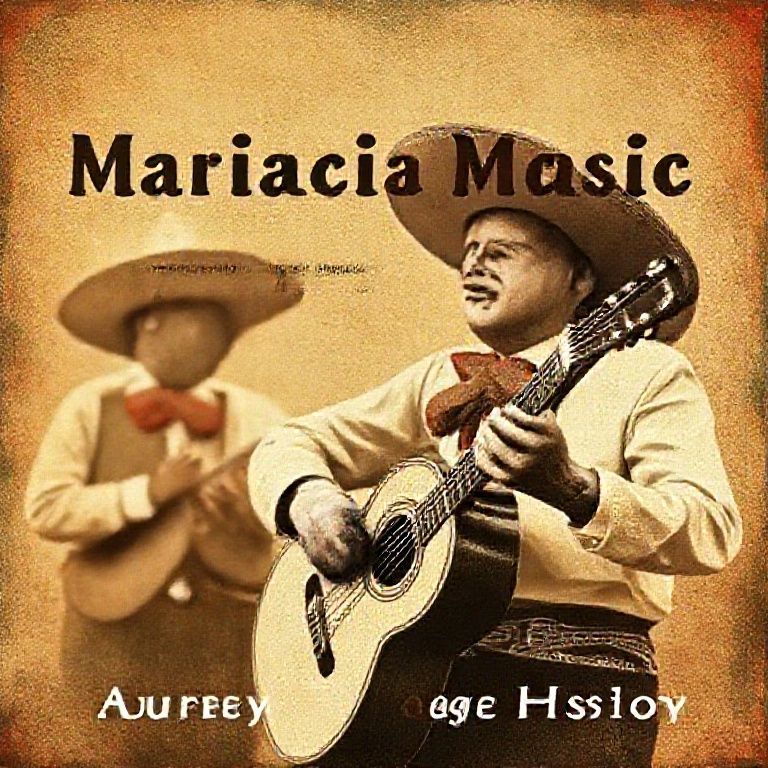Mariachi music, with its vibrant melodies, intricate harmonies, and flamboyant costumes, is more than just a genre; it’s a symbol of Mexican identity and cultural pride. From humble beginnings in the state of Jalisco to international acclaim, the history of mariachi is a captivating narrative of evolution, adaptation, and enduring appeal. This unique art form has woven itself into the fabric of Mexican society, accompanying celebrations, serenades, and moments of both joy and sorrow.
Understanding the rich tapestry of mariachi music allows us to appreciate its depth and significance. Its journey from rural folk music to a globally recognized emblem of Mexican heritage is a testament to the resilience and creativity of the Mexican people. Join us as we delve into the fascinating history of mariachi, exploring its origins, transformations, and lasting impact on the world stage.
The Birthplace: Jalisco and Early Influences
The roots of mariachi can be traced back to the western Mexican state of Jalisco, primarily during the 19th century. This region, known for its rich agricultural traditions and vibrant folk culture, provided fertile ground for the development of this distinctive musical style. Initially, mariachi was a rural folk music, performed by peasants and farmers during local festivities and religious celebrations.
Indigenous, Spanish, and African Roots
- Indigenous Influence: The pre-Columbian inhabitants of Jalisco had their own musical traditions, using instruments like drums, flutes, and rattles. While the exact influence is debated, it’s believed that some rhythmic and melodic elements may have been incorporated into early mariachi music.
- Spanish Influence: The arrival of the Spanish introduced new instruments, such as the violin, guitar, and harp, which quickly became integral to mariachi ensembles. The Spanish also brought harmonic structures and musical forms that blended with indigenous traditions.
- African Influence: Although less direct, the African diaspora in Mexico contributed rhythmic complexities and percussive elements to the evolving musical landscape, potentially influencing mariachi’s dynamic and energetic style.
Evolution and Transformation
Throughout the 19th and early 20th centuries, mariachi music underwent significant transformations. The instrumentation, performance style, and repertoire evolved, reflecting the changing social and cultural landscape of Mexico.
From Regional Folk to Urban Phenomenon
As Mexico experienced urbanization and modernization, mariachi music migrated from rural villages to urban centers like Guadalajara and Mexico City. This transition brought new audiences and opportunities for mariachi musicians, leading to professionalization and increased exposure.
The Rise of Radio and Recording
The advent of radio and recording technology in the early 20th century played a crucial role in popularizing mariachi music. Radio stations broadcast mariachi performances to a wider audience, while record companies began producing and distributing mariachi albums, further solidifying its place in Mexican popular culture.
Key Figures and Musical Innovations
- Cirilo Marmolejo: Often credited with pioneering the “modern” mariachi ensemble, Marmolejo standardized the instrumentation and musical arrangements in the early 20th century.
- Gaspar Vargas: The founder of Mariachi Vargas de Tecalitlán, one of the most influential and enduring mariachi ensembles in history. Vargas’s ensemble helped to refine and popularize mariachi music on a national and international scale.
Mariachi’s Enduring Legacy
Today, mariachi music is recognized as a UNESCO Intangible Cultural Heritage, a testament to its cultural significance and enduring appeal. Mariachi ensembles continue to perform at weddings, quinceañeras, festivals, and other important events, both in Mexico and around the world.
Global Recognition and Cultural Ambassador
Mariachi music has transcended its Mexican roots to become a global phenomenon. Mariachi ensembles perform in concert halls, cultural festivals, and private events around the world, serving as ambassadors of Mexican culture and heritage. The music’s universal themes of love, loss, and celebration resonate with audiences of all backgrounds.
The Future of Mariachi
While rooted in tradition, mariachi music continues to evolve and adapt to contemporary tastes. Younger generations of musicians are experimenting with new sounds and incorporating influences from other genres, ensuring that mariachi remains relevant and vibrant for years to come. The future of mariachi lies in its ability to balance tradition with innovation, preserving its rich heritage while embracing new possibilities.
Conclusion
The history of mariachi is a testament to the power of music to reflect and shape cultural identity. From its humble origins in the fields of Jalisco to its global recognition as a symbol of Mexican heritage, mariachi’s journey is a captivating story of evolution, resilience, and enduring appeal. As mariachi music continues to evolve and inspire, it will undoubtedly remain a vital part of Mexico’s cultural landscape and a source of pride for generations to come.
If you found this exploration of mariachi history insightful, share this article with fellow music lovers and explore more of Life in Mexico for further cultural discoveries!
IMAGE: A vibrant and colorful image depicting a traditional mariachi band performing in a lively town square in Jalisco, Mexico. The musicians are wearing ornate charro suits with sombreros. The scene is filled with energy and joy, with people dancing and celebrating in the background. The lighting is warm and sunny, capturing the essence of Mexican culture. The style is realistic and documentary-like, emphasizing the authenticity of the scene.


